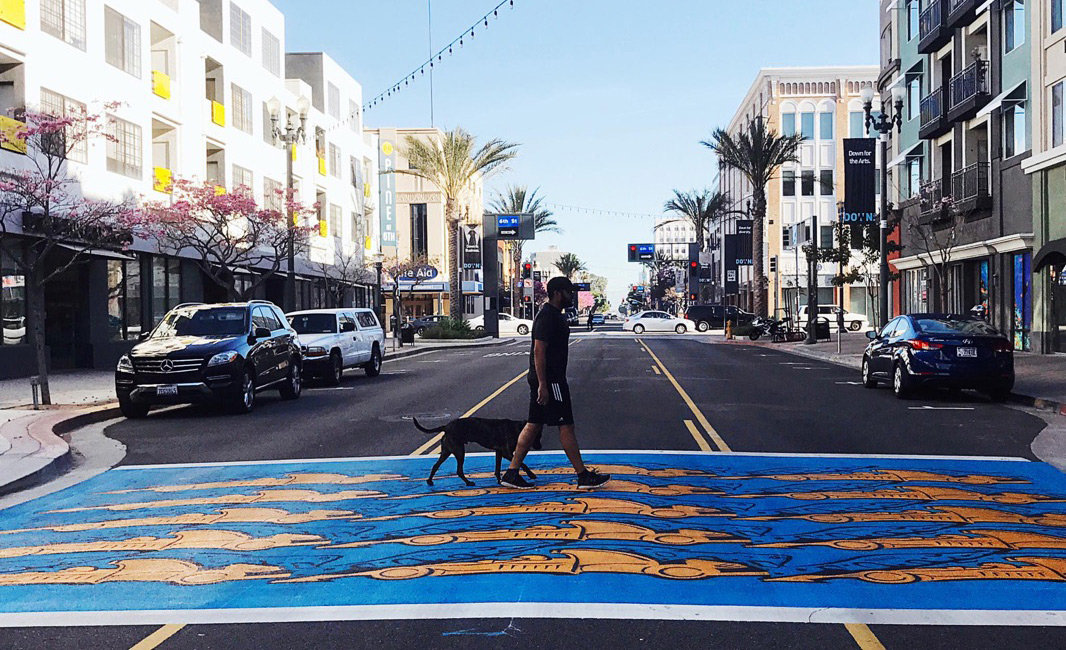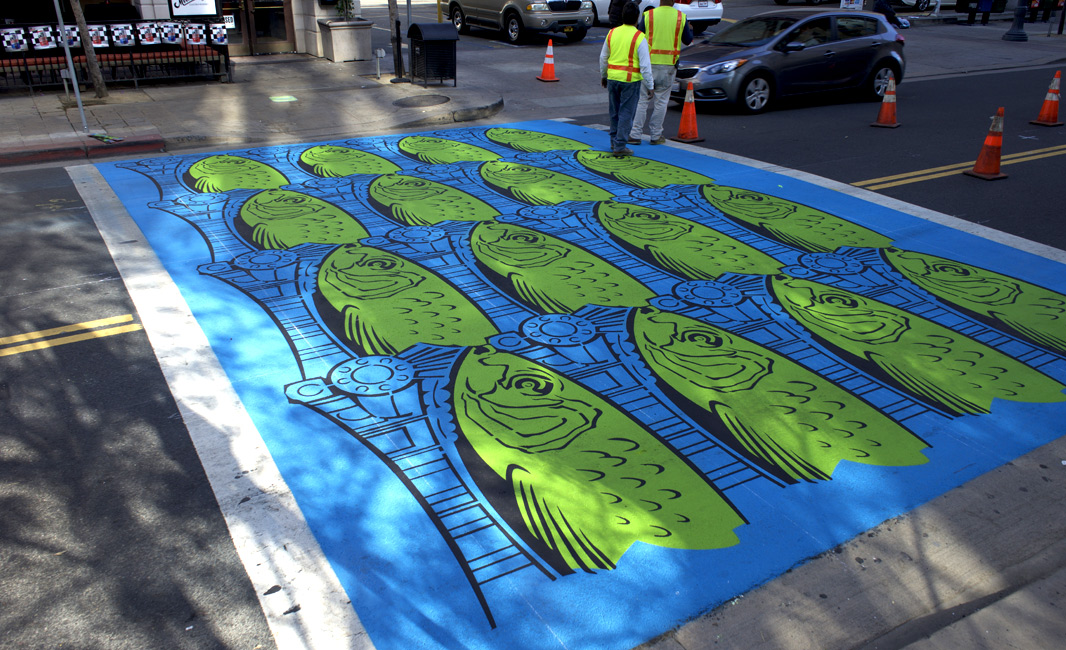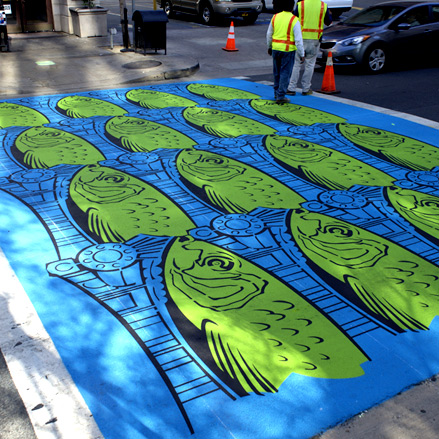Creative Crosswalks
Pine Avenue Creative Crosswalks
In 2017, the Downtown Long Beach Alliance (DLBA) commissioned artist Hataya Tubtim to create the first crosswalk art project in Downtown Long Beach. The goal of the project was to further support a vibrant pedestrian environment by adding a sense of delight and discovery to the public realm. Five unique designs were installed on Pine Avenue between 1st Street and 7th Street in March 2017. Each design recognizes the legacy of human enterprise during the first century of Long Beach’s development while acknowledging the importance of a vibrant marine environment along our coast. Each crosswalk has images of marine life juxtaposed with images portraying the history of innovation and industry in Long Beach. For instance, at the crosswalk between First Street and Broadway, in one direction the art displays the Northern Anchovy and in the other direction images of the Santa Fe Railroad can be seen. The art is considered to be temporary and will be in place for up to 3 years. To learn more about the marine life found off the coast of Long Beach, visit the Aquarium of Pacific in Downtown Long Beach.
About the Artist
Railroad and Northern Anchovy
• In the late 19th century, introduction of the railroad created a real estate boom in the area that would become Long Beach.
• Northern Anchovies are one of the most abundant fish in the Northeast Pacific, and they avoid predators by swimming in schools of thousands.
Port and Pacific Rock Crab
• Established in 1911, today the Port of Long Beach is the second busiest container port in the United States.
• The Pacific Rock Crab diet consists of a variety of bivalves, snails and echinoderms, as well as other crustaceans such as hermit crabs.
Spruce Goose and Brown Pelican
• On November 2, 1947, the Spruce Goose made its first and only flight over the Long Beach Harbor. It’s the largest plane ever constructed and made entirely of wood.
• The Brown Pelican dives from as high as 65 feet over the ocean, and as it plunges into the water its throat pouch expands to trap fish, filling with up to 2.6 gallons of water.
Grand Prix and Leopard Shark
• The first Long Beach Grand Prix, a Formula 5000 race won by Brian Redman that attracted more than 46,000 race fans, was held on September 28, 1975.
• Leopard Sharks are docile to humans but are predators that feed on invertebrates and small fish.
Metro and Bat Ray
• The Metro Blue Line connecting Long Beach and Los Angeles opened in 1990 and largely follows the right-of-way of the Pacific Electric Railway line which discontinued service in 1961.
• The Bat Ray flaps its pectoral fins in the sandy ocean floor to expose buried prey and then uses its lobe-like snout to catch them.











